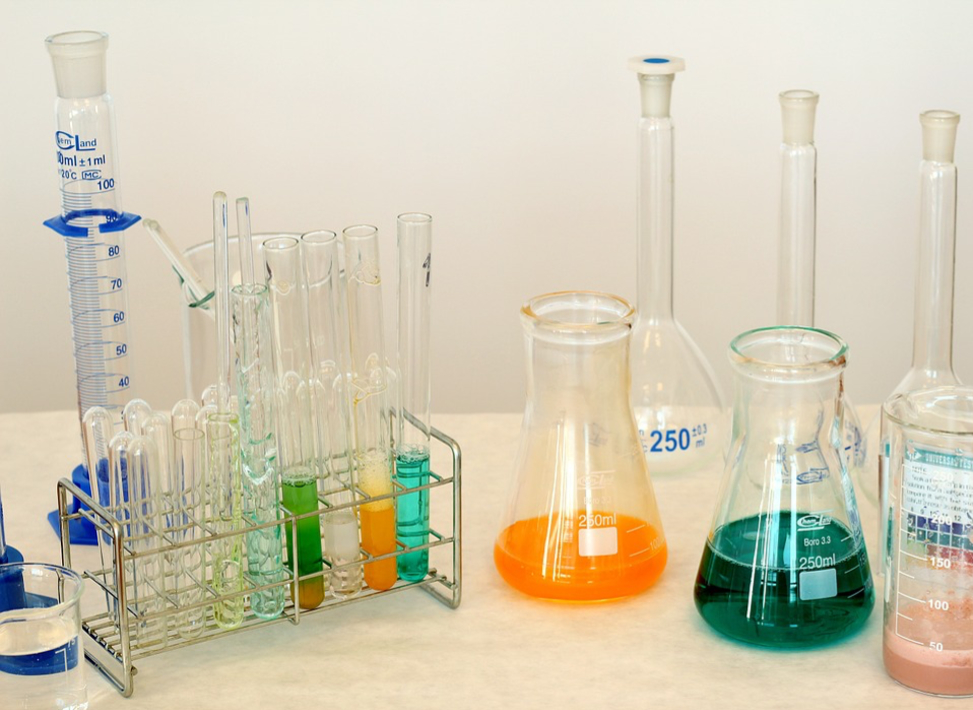 Maths, Physics & Chemistry
Maths, Physics & Chemistry
Naturally occurring enzyme does the unexpected
Macrocycles are complex molecules with unique three-dimensional shapes, that are difficult to synthesize in the lab. We show that a commercially available enzyme can execute this non-natural reaction, given the right building blocks. This allows us to further explore the use of macrocycles and the boundaries of molecular synthesis.

Enzymes are molecular machines that produce specific molecules with exquisite efficiency and near perfect control of the end product. Chemists have long sought to employ enzymes in laboratory settings, but are often limited to the specific reactions each enzyme evolved to execute. The efficiency and specificity which make enzymes so useful, pose a difficulty for chemists as it is rare that an enzyme takes on an unexpected function, or displays selectivity for non-natural structures.
One of the things that make enzymes useful is their ability to determine a molecule's chirality. Chirality arises when a molecule's mirror image is not superimposable, in the same way your hands have the same basic architecture, but cannot be superimposed one on top of the other (the word chirality comes from the Greek word kheir, meaning "hand"). Chirality can have a drastic effect on a molecule's properties, sometimes differentiating between a life-saving medicine and a toxic carcinogen.
Macrocycles are molecules with many applications in pharmaceuticals, agrochemicals, aromachemicals and electronics. Most macrocycles have rings that freely rotate about their center, like a skipping rope. Their preparation is challenging, and even more so when the macrocycle adopts a shape that displays chirality. Chemists can design chiral macrocycles by blocking the rotation of the ring, either by making the rings smaller, or installing large groups of atoms that block the rotation. However, both of these result in molecules that are crowded and often rigid, which are challenging to synthesize.
Inspired by the efficiency of enzymes, we wondered whether they can be used to synthesize chiral macrocycles. We were aware that the challenge was significant: no known enzyme has evolved to prepare chiral macrocycles, and any enzymatic reaction we employ will require significant modifications. We identified lipases, a group of digestive enzymes with traditional industrial uses, as a possible starting point for our investigations due to their relative stability. Unlike many other enzymes which evolved to function under physiological conditions, lipases can function at higher temperatures and in presence of organic solvents used by synthetic chemists in laboratories
We designed simple building blocks, hoping some lipases would be able to assemble them to form the desired macrocycles. However, our initial investigations were discouraging! The chiral macrocycles had three-dimensional structures that enzymes were not accustomed to processing. Through trial-and-error, we finally found a well-known, commercially available lipase called CALB, that could prepare the macrocycles. Astonishingly, CALB also showed near-perfect selectivity for the chiral macrocycle! Unfortunately, the CALB lipase was still limited in terms of the size of macrocycle it could accommodate. To circumvent this limitation, we designed macrocycles with "functionalities" handles which can be used by chemists to add new fragments to molecules. In such a manner, we open up endless possibilities for diversity; if a desired structure cannot "fit" within the enzyme, it can be prepared chemically from a related macrocycle.
Biocatalysis - the use of enzymes to streamline chemical reactions in the lab - has long been used industrially to prepare small, highly valuable chiral molecules, and is recognized as an environmentally friendly alternative for chemical synthesis. However, it was previously unexplored for the synthesis of chiral macrocycles. The rare three-dimensional shape of macrocycles suggests possible applications in pharmaceuticals and materials science, which could be further explored once their synthesis is less challenging.
We were able to show that the enzyme CALB can efficiently and selectively produce chiral macrocycles. It is remarkable that a naturally-evolved enzyme could promote a transformation that was completely non-natural. The application of CALB toward the synthesis of chiral macrocycles demonstrates that enzymes have more tricks up their sleeve, and that chemists' curiosity and creativity can continue to push the boundaries of molecular synthesis.
Original Article:
Gagnon, C. et al. Biocatalytic synthesis of planar chiral macrocycles. Science (80-. ). 367, 917-921 (2020).
Edited by:
Dr. Ayala Sela , Associate Editor
We thought you might like
Short bursts of exercise improve brain function
Jan 18, 2018 in Psychology | 3 min read by David MoreauHow behavior can transcend generations
Dec 10, 2019 in Evolution & Behaviour | 3.5 min read by Itai Antoine TokerA new way to look at light pollution: revealing the good, the bad and the ugly
Sep 2, 2020 in Earth & Space | 3.5 min read by Fabio Falchi , Riccardo FurgoniPoverty and unpreparedness make monsters out of ordinary hazards
Jul 17, 2023 in Earth & Space | 4 min read by Afroz Ahmad ShahMore from Maths, Physics & Chemistry
Testing gravity through the distortion of time
Sep 20, 2024 in Maths, Physics & Chemistry | 3 min read by Sveva CastelloStacking molecular chips in multiple dimensions
Aug 30, 2024 in Maths, Physics & Chemistry | 3 min read by Lucía Gallego , Romain Jamagne , Michel RickhausReversible Anticoagulants: Inspired by Nature, Designed for Safety
Jun 12, 2024 in Maths, Physics & Chemistry | 4 min read by Millicent Dockerill , Nicolas WinssingerDistance-preserving moves always keep a point fixed
May 18, 2024 in Maths, Physics & Chemistry | 4 min read by Shaula FiorelliA resonance triggers chemical reactions between the coldest molecules
Apr 5, 2024 in Maths, Physics & Chemistry | 3 min read by Juliana Park , Wonyl ChoiEditor's picks
Trending now
Popular topics


